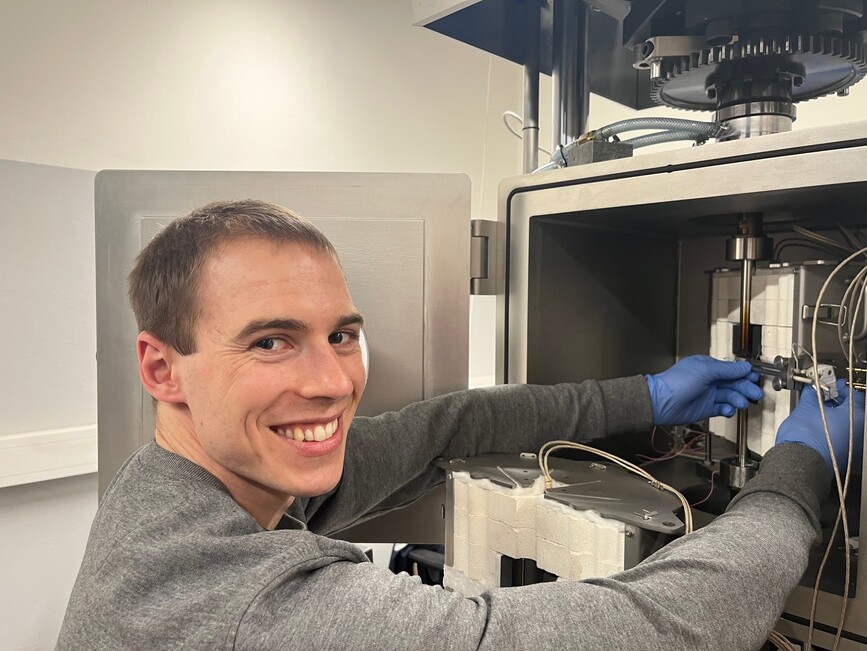What is the topic of your PhD thesis?
"Fatigue crack analysis of tungsten for nuclear fusion applications".
What is the focus of research?
I am studying how tungsten breaks at high temperatures under repeated loading, or fatigue, conditions. Tungsten is an important material for fusion reactors because of its ability to remain strong at elevated temperatures. The body centered cubic lattice structure is responsible for the pronounced temperature dependence of tungsten's fracture toughness, the point where it breaks. Respectively, the operating temperature affects the damage tolerance as well as the fatigue crack growth (FCG) behavior of tungsten samples or components. Surprisingly the FCG has not been thoroughly investigated with only initial results with FCG-experiments at room temperature.
During the last year, my challenge was to build up a high temperature vacuum testing system that can perform FCG-experiments in the fusion relevant temperature window. Now that the set-up is complete, I can investigate the temperature and microstructure dependency of the fracture and other material properties.
What is the benefit for fusion research?
Tungsten has a long history in light bulb production, as alloying element for tool steels, in tungsten carbide production, or as a corrosion resistant material in the chemical industry. Obviously, research is far advanced for these typical applications and associated mechanical properties like creep behavior and tensile strength are well known.
Tungsten, as a promising plasma facing material in nuclear fusion reactors, is subject to completely new demands in terms of failure safety and damage tolerance. Plasma events, for instance edge-localized modes, as well as the production process of plasma facing materials inevitably initiate cracks. Combined with thermocyclic loading during the pulsating operation of Tokamak reactors, cracks in these critical components are subjected to an additional driving force.
With our fatigue crack propagation experiments, the reliability and remaining service life of pre-cracked structural components can be evaluated, and with comparative results of different tungsten qualities, we are contributing to the EUROfusion material selection process.
What are the biggest challenges?
The main task - to measure the fatigue crack propagation behavior of rolled tungsten sheets in vacuum at elevated temperature - has turned out to be an interdisciplinary challenge, as no industrial testing system meets our requirements. My roots in the field of mechanical engineering and previous experience in metal working and electronics have been beneficial for the progress of the project. However, currently I'm facing the same opponent as the promising climate game changer - nuclear fusion - itself: TIME.
What plans do you have for your future? What will you be doing in five years? Would you like to continue research or are you going to work in the industry?
To be honest, I can't answer this question with certainty at this time. I'm driven by my interests in materials science, mechanical engineering, and mountaineering. For sure there will be opportunities and places where these requirements can be combined.
What was your motivation to write a fusion relevant PhD thesis? What fascinates you about nuclear fusion?
Many generations of scientists have tried and failed to build efficient fusion power plants. Not because they were idle, but because controlling the fusion process is probably one of the greatest scientific and technical challenges in human history. The ITER project is setting completely new standards in terms of global cooperation and interdisciplinary collaboration, and I am convinced that this is the path needed to make nuclear fusion power plants a reality. It is an honor for me being involved in this fascinating project.
